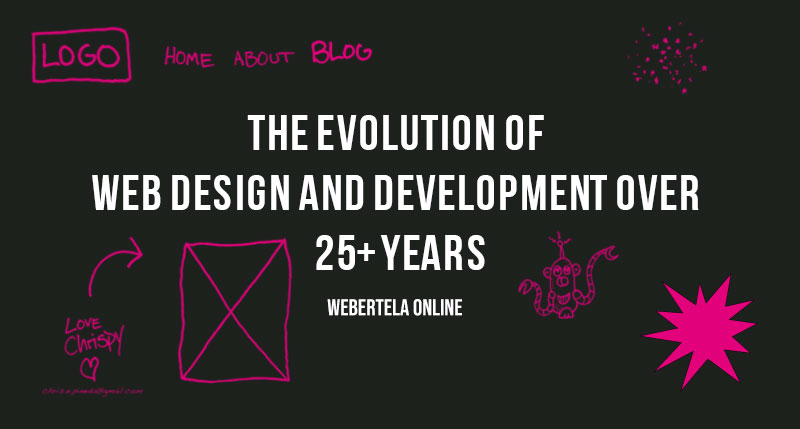The Evolution of Web Design and Development Over 25+ Years

The internet has transformed dramatically over the past few decades, revolutionizing the way we communicate, work, and conduct business. One of the most visible aspects of this transformation is the evolution of web design and development. From the humble beginnings of static HTML pages to the dynamic, interactive websites of today, the journey of web design and development over the past 25+ years is a testament to human innovation and technological progress.
1. The Early Days:
In the early days of the internet, websites were simple and static, consisting primarily of text and images laid out using HTML (Hypertext Markup Language). These websites lacked the sophistication and interactivity that we take for granted today. However, they laid the foundation for what was to come, demonstrating the potential of the World Wide Web as a platform for sharing information.
2. Rise of Dynamic Content:
As technology advanced, so did the capabilities of web design and development. With the introduction of technologies like CSS (Cascading Style Sheets) and JavaScript, developers gained the ability to create more dynamic and visually appealing websites. CSS allowed for better control over the layout and presentation of web pages, while JavaScript enabled interactivity and animation, ushering in a new era of web design creativity.
3. The Era of Mobile Responsiveness:
With the proliferation of smartphones and tablets, the importance of mobile responsiveness became increasingly apparent. Websites needed to adapt to different screen sizes and resolutions to provide a seamless user experience across devices. Responsive web design emerged as a solution, allowing websites to dynamically adjust their layout and content based on the device being used, ensuring optimal viewing and usability for all users.
4. Introduction of Content Management Systems (CMS):
The early 2000s saw the rise of content management systems (CMS), such as WordPress, Joomla, and Drupal. These platforms democratized web development, allowing users with little to no coding experience to create and manage complex websites with ease. CMS platforms provided intuitive interfaces for content creation and editing, as well as a wide range of themes and plugins to extend functionality, empowering businesses and individuals to establish their presence on the web.
5. Modern Trends and Technologies:
Today, web design and development continue to evolve at a rapid pace, driven by emerging trends and technologies. Responsive web design frameworks like Bootstrap and Foundation have become standard tools for building mobile-friendly websites. Single-page applications (SPAs) using frameworks like React, Angular, and Vue.js offer a more seamless and interactive user experience. Progressive Web Apps (PWAs) combine the best of web and mobile apps, providing offline access and native-like performance. Additionally, the rise of headless CMS architecture decouples the content management layer from the presentation layer, enabling greater flexibility and scalability in web development.
6. The Future of Web Design and Development:
Looking ahead, the future of web design and development promises even more innovation and transformation. Emerging technologies such as artificial intelligence, virtual reality, and voice interfaces are poised to reshape the way we interact with the web. AI-powered chatbots and voice assistants will enable more natural and conversational interactions, while VR and AR technologies will create immersive and engaging web experiences. As we continue to push the boundaries of what is possible, one thing is clear: the evolution of web design and development is far from over.
Conclusion:
The evolution of web design and development over the past 25+ years is a testament to the ingenuity and creativity of the human mind. From the static HTML pages of the early days to the dynamic, interactive websites of today, the journey has been marked by constant innovation and adaptation to new technologies and trends. As we look to the future, we can only imagine what exciting developments lie ahead, but one thing is certain: the web will continue to evolve, providing new opportunities and challenges for designers and developers alike.
Contact with me
Send email: levan.andguladze@gmail.com
Sharing is caring!